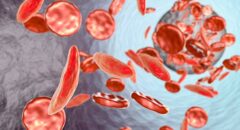
There are a number of reasons women decide to get involved in pageantry. International Mrs. Massachusetts and founder of #ThroughThePain Dima Hendricks, saw it as an opportunity for representation and to create awareness around the health disparities that exist for those living with sickle cell disease (SCD), which significantly impacts Black Americans.
Hendrick’s journey with sickle cell disease (SCD) began in the 1980s when she was diagnosed at just six months old. At the time, newborn screening for SCD wasn’t mandatory. No longer receiving fetal hemoglobin from her mother, symptoms of the disease began to manifest.
The Early Years
“My mother was not aware when I was born that I had sickle cell disease until I was six months old and I experienced my first pain crisis,” Hendricks shares. “My mother was not aware how devastating sickle cell disease actually was.”
Although the disease was having a significant impact on Hendricks, it took several visits to different hospitals before she was properly diagnosed by a hematologist.
“We went to three different hospitals and I finally went to a hospital in the Boston area where we met…my first hematologist, who diagnosed me with sickle cell disease,” she shares.
Complications and the Unseen Struggles
Throughout her life, Hendricks has received over 150 blood transfusions, which have been instrumental in maintaining her health.
“My first blood exchange transfusion happened when I had a mini-stroke (TIA) at the age of 11,” says Hendricks.
Once her sickled red blood cells were replaced with healthy donor blood, Hendricks immediately felt her body revitalize.
“I didn’t realize how important it was to have this lifesaving blood for sickle cell warriors,” she shares.
Unfortunately, the mini-stroke she experienced at age 11 was just the beginning. She has also faced








